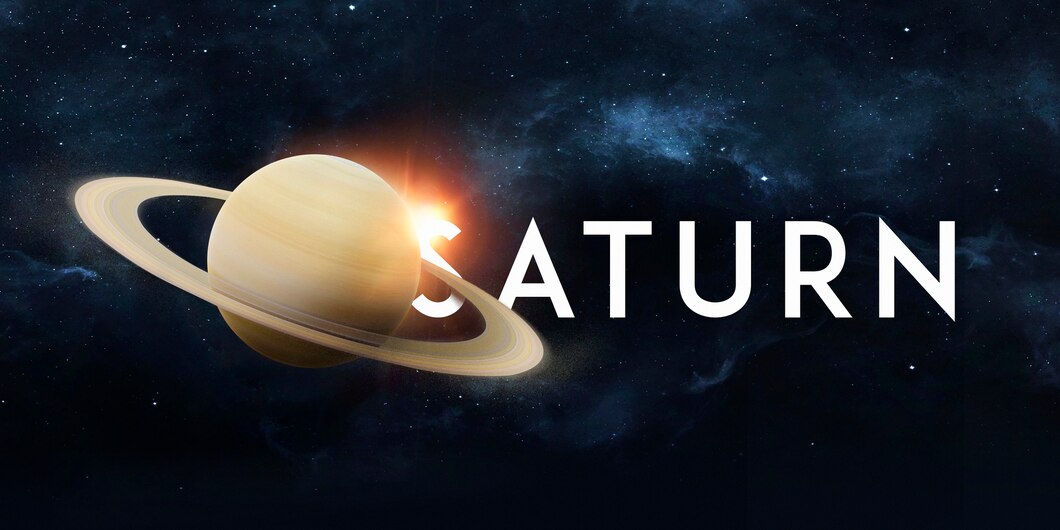"Get ready for a celestial phenomenon as Saturn ring disappear in 2025!"
In a remarkable celestial display, Saturn’s iconic rings are set to vanish from the Earth’s view by 2025. Once a fascination for astronomers and space enthusiasts alike, these cosmic structures will undergo a peculiar optical illusion that will render them invisible to observers on Earth. The phenomenon, triggered by Saturn’s position and angle in its orbit, will present a celestial spectacle that’s both rare and transient.
The Disappearance: A Cosmic Illusion
As the sixth planet from the Sun, Saturn is renowned for its spectacular ring system, a series of seven distinct rings primarily composed of icy particles and rocky debris. These rings, encapsulating the planet in a mesmerizing display, will undergo a peculiar vanishing act due to an optical illusion. By 2025, Saturn will tilt in such a way that it will align almost edge-on with Earth. This alignment will render the rings virtually invisible, akin to observing a thin sheet of paper positioned at a distance. However, this celestial magic is temporary; the rings will return to visibility in subsequent years, peaking by 2032, revealing the underside of Saturn’s rings in all their glory.
Formation and Composition of Saturn’s Rings
Saturn’s ring system is a cosmic marvel formed from remnants of comets, asteroids, and moons that ventured too close to the planet, succumbing to its immense gravitational pull. Made up of billions of small chunks of ice and rock, coated with various materials like dust, the rings stretch up to 282,000 kilometers from the planet, yet their vertical height is typically about 30 feet. These rings, known as the A, B, C, and other designations, showcase various characteristics and transparencies, each a testament to the unique formations within Saturn’s orbit.
Vanishing Rings: A Technical Insight
The rings are not solid structures; rather, they are a collection of countless small particles in orbit around Saturn. Their appearance, although seemingly permanent, is subject to change due to Saturn’s 29.5-year orbital dance. This cycle will lead to the illusion of the rings disappearing from view, leaving spectators gazing upon a seemingly ringless Saturn. The rings’ formation, structure, gaps, and dynamics are influenced by Saturn’s moons, which orbit near the edges of the rings, creating gravitational interactions known as “orbital resonances.”

Scientific Insights and Understanding to Saturn ring disappear in 2025
Scientific discoveries about Saturn’s rings are still being made, thanks to a combination of historical observations, space missions, and laborious study. Astronomers have long been fascinated by these cosmic structures, which are mostly made up of ice particles and rocky fragments. While their precise age is unknown, current research indicates that these rings may have formed relatively recently in cosmic terms, around 400 million years ago, much younger than a tenth of Saturn’s own age, which is estimated to be around 4.6 billion years.
Theories abound regarding the origin of these rings, with one hypothesis proposing that they are remnants of destroyed celestial bodies like moons or comets. Another conjecture suggests they are remnants from the original nebular material from which Saturn formed. The intricacies of their structure, formation, and dynamics are deeply intertwined with the gravitational influence of Saturn’s numerous moons. These moons, including shepherd moons, strategically orbit near the edges of the rings, playing a significant role in maintaining the rings’ paths and delineating their edges. These gravitational interactions, known as “orbital resonances,” shape the ring structures and dynamics, adding depth to our understanding of the intricate dance of celestial bodies.
Throughout history, spacecraft such as the Cassini-Huygens mission, a collaborative effort between NASA, ESA, and ASI, have provided invaluable insights into Saturn’s rings, moons, and overall planetary system. The wealth of information gathered from this mission has contributed significantly to our comprehension of the ring system’s complexities, their composition, and the gravitational interplay governing their existence.
This relentless pursuit of understanding Saturn’s rings isn’t just about unravelling the mysteries of a singular planet’s rings; it’s about comprehending the broader mechanisms and processes shaping our solar system. Through this cosmic jigsaw puzzle, scientists aim to glean insights into the evolution and dynamics of celestial bodies, enhancing our knowledge of the universe’s grand design. The temporary disappearance of these rings, while a remarkable sight in itself, serves as a reminder of the ever-changing nature of the celestial dance, urging us to seize the fleeting moments of cosmic wonders.
Saturn’s Rings myth
Saturn’s rings have long held a place in both myth and science. Named after the Roman god of agriculture, Saturn has been observed and symbolized since ancient times. The exploration of these rings and Saturn’s overall system has been extensively studied through missions such as the Cassini-Huygens mission, offering profound insights into the planet’s rings, moons, and magnetic field.
While the disappearance of Saturn’s rings by 2025 might seem disheartening, this phenomenon is a transient and fleeting cosmic event. As Saturn continues its orbital dance, it will gradually reposition, offering a chance to behold the resplendent rings once again by 2032. Meanwhile, the current time presents an excellent opportunity for stargazers to seize the moment and witness the beauty of Saturn’s rings with telescopes before the magic of their visibility diminishes.
The enigmatic disappearance of Saturn’s rings is a testament to the ever-changing cosmic dance in our solar system, reminding us of the transient nature of even the most spectacular celestial wonders.


1 thought on “Saturn ring disappear in 2025: till 2032”